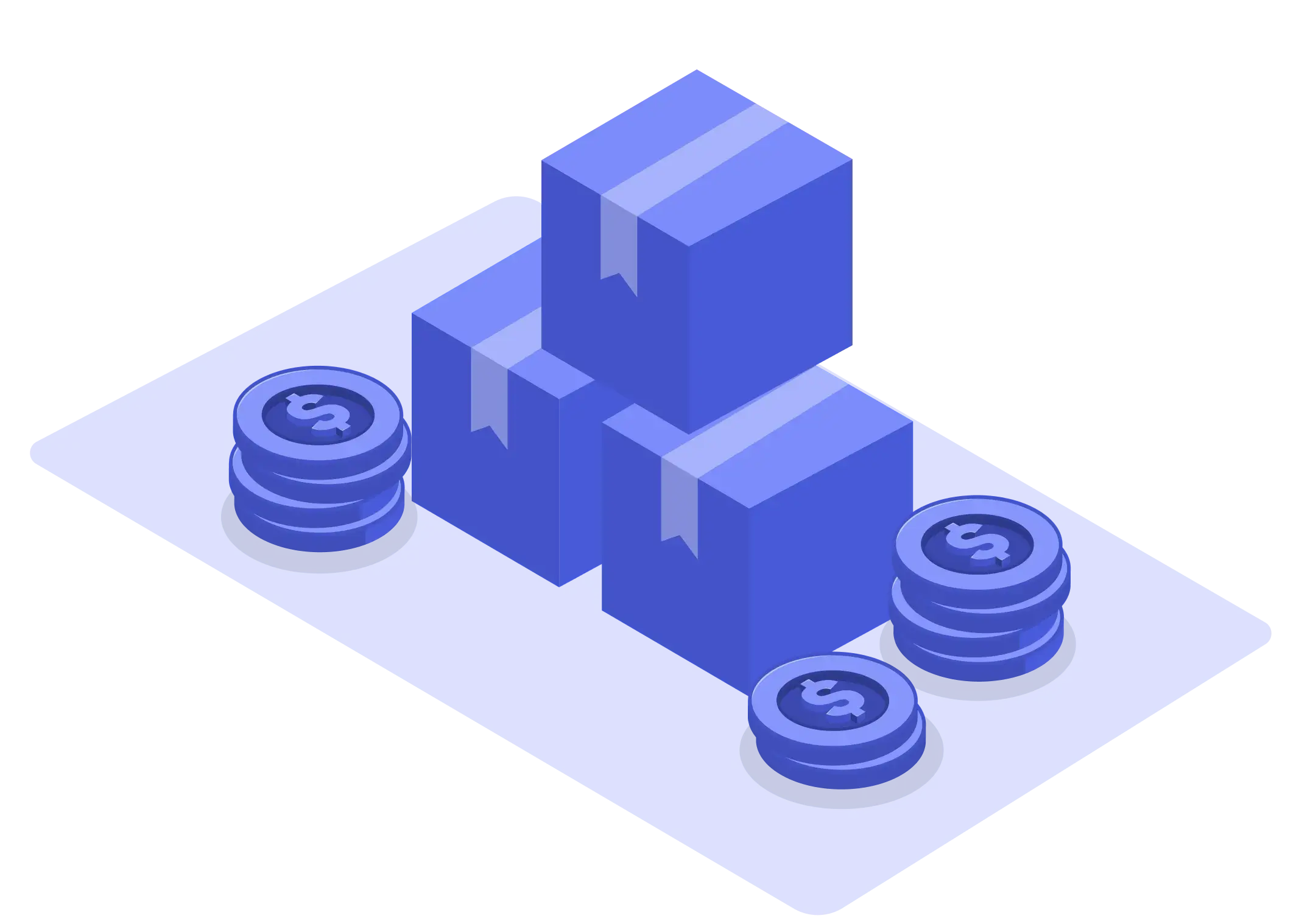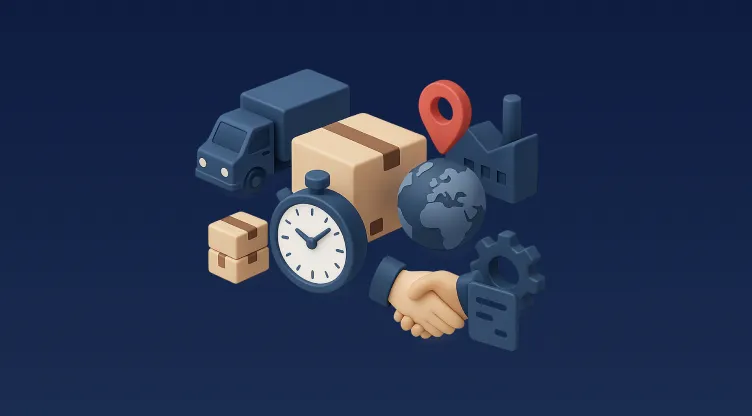The Purchase Order Basics
Definition & Objective of a PO (Purchase Order)
What is purchase order? A PO is a commercial document given out by the buyer to a seller indicating different types, quantities & agreed-upon prices of the products or services. It is considered a legal offer to buy, which becomes a contract when accepted by the supplier. This document marks the start of creating a purchase order process and gives the terms of the deal so that both parties know exactly what is being ordered, for how much, and when to expect delivery. This clarity ensures that purchase order benefits include eliminating misunderstandings and disputes.
Key Elements of a Purchase Order Document:
Many elements should characterize the purchase order document so it can be clear and legally protected. These include the purchase order number, which differentiates the order, the issue date, details about the vendor, such as contact information, item descriptions, quantities, unit prices, and total costs, delivery terms, payment terms, and special instructions or conditions. These details are very important for the purchase order benefits, such as streamlining procurement and inventory management.
History Evolution of Purchase Order:
Purchase orders are highly advanced, from traditional or manual methods like paper to the present with digital alternatives. Businesses, through time, first relied on handwriting or typewritten pieces, which have lots of potential mistakes and latencies. As new digital methods surface, changes in the method to execute the purchase order process have increased with reduced propensity towards error-proneness. Learning about it will allow them to gain perspectives on purchases in running modern businesses.
Digital Transformation in Purchase Order Management:
Purchase order management has seen a complete revolution with the help of technology. Automated systems have made the purchase order process easier by enabling electronic creation, tracking, and management of POs. The digital transformation in purchase order management provides various purchase order benefits, such as real-time visibility into order status, automated approval workflows, and integration with accounting systems, thus improving financial tracking and budgeting.
There are various types of purchase orders, ranging from one-time standard purchases to blanket orders for recurring transactions. This is an area that businesses should be well versed in to maximize the benefits of purchase orders in their operations.
Importance of Purchase Orders in Business Operations
Clear Communication Between Buyers and Suppliers:
This is an important order/procurement, giving room for a clear and documented record of what has been ordered, hence furthering the whole operation. This clarity is important for reducing misunderstandings between buyers and suppliers. The purchase order will detail the whole purchase order process, item descriptions, quantities, and agreed prices. Therefore, POs ensure that the parties involved are well aware of the transaction details. These purchase order benefits are especially valuable for complex transactions with multiple items or services, thus ensuring that everyone is on the same page.
Legal & Financial Guarantees Under Purchase Orders
Apart from communication, a purchase order is a legally binding document that may be relevant during disputes. It serves as protection for both the buyer and the supplier. Once a supplier accepts a PO automatically becomes a binding contract that offers legal recourse should there be a failure to fulfill or inaccuracies with the consignment. It is one of the most important advantages businesses benefit from to limit their financial risk due to informal agreements. All these- the creation, issuance, and verification of the order form part of the purchase order process- lead to legal and financial protection in the POs.
Formal Procurement and Risk Mitigation
Business risk mitigation often occurs through purchasing formalization based on purchase orders. A clearly defined purchase order process will generally avoid the kinds of informal purchase agreements that bring about misunderstandings, delivery delays, and even non-delivery. Hence, the proper control of stocks, fewer error rates, and enhanced audit trails ensure proper financial reporting and budgetary control. Again, this formal structure helps avoid compliance and regulations, ensuring these businesses conform to such industry standards and set regulations.
Compliance and Regulatory Considerations:
Purchasing orders are the most important source of compliance and adherence to regulations and standards. They manage the record of transactions, which has proven very useful in audits or regulatory review situations. The practice of purchase orders records all transactions correctly, ensuring that businesses are given the chance to comply legally with all the requirements. This is critical in industries requiring strict compliance, such as pharmaceutical, food and beverage, or government contracts. Knowing the different types of purchase orders can help companies choose the best document for their procurement activities to better ensure they comply with relevant regulations.
Types of Purchase Orders
Standard Purchase Order: A standard purchase order is applied to a one-time buy in which the quantity, price, and delivery are known. This type of purchase order is simple and specifies the details of a single transaction. It helps businesses when they want to purchase a particular product or service that will be used directly and immediately; as a clear illustration of the purchase order, there are fewer chances of mistakes or miscommunication.
Blanket Purchase Order: A blanket purchase order is normally used to make repeat purchases over a period of time. It enables companies to make volume discounts and eliminate the need to order in each cycle since they have agreed on a long-term contract with the supplier. Some of the purchase order benefits are cost savings through negotiated prices, reduction of administrative overheads, and easy procurement.
Planned Purchase Order: This purchase order is used when the business needs scheduled deliveries over time, mostly for inventory management. It helps in scheduling and predicting the demand for the inventory so that the supplies reach the places of consumption on time. The stages of the purchase order of the planned orders comprise the arrangement of delivery schedules, which can be tailored according to demand, and provision of purchase order benefits like proper inventory control and reduction of stockouts.
Contract Purchase Order: Tied to a contract for long-term supply agreements, a contract purchase order involves a clear understanding by both parties about terms for an extended time. It is used when there's a need to have continued supplies, usually along the same business line like building and manufacturing. The purchase order gives stability in supply, negotiating terms, and protection under law; this goes for large projects or those meant to last longer!
Purchase Order Process: Step-by-Step Guide
Creating and issuing the purchase order creates a PO. A PO is created from a number of processes, among which are finding a need to purchase goods or services, seeking some form of internal approval, and detailing an order. The purchase order benefits here are clear communication and legal protection. A business has to ensure that all details of the PO appear, including descriptions of items, their respective quantities, unit prices, and delivery terms, so as not to face an element of miscommunication.
Supplier Acceptance and Order Fulfillment: The supplier must accept the purchase order sent to them. In this case, both parties understand the transaction involved. During this stage, the supplier processes the order by maybe scheduling for production or delivery. The advantages of this stage are that there will be a better communication system with minimal error rates in order fulfillment.
When goods arrive, the purchase order process requires the business to inspect them against the purchase order. The goods must be in the correct quantity, quality, and specifications of the purchase order. Here, some advantages of purchase orders are taken, like control of inventory and swift discrepancy resolution.
Pay and Order Completion: These last steps involve paying and closing the order, which can also include payment records. For the proofing of the commodities, after validation, the purchaser processes payments within the scope of the established terms of purchase orders. At the same time, this final process helps ensure all financial reporting budgeting enables proper transparency and also closes an order cycle purchase orders.
Preparation of Internal Requisition Documentation Most businesses require the preparation of internal requisition documentation before issuing a purchase order. This step involves internal approval processes to ensure that the need for the purchase is justified and budgeted for, thus contributing to purchase order benefits such as cost control.
Vendor Selection and Evaluation Criteria: The right vendor is chosen in the purchase order process. Business houses evaluate a supplier on criteria such as reliability, quality, pricing, and delivery capabilities. This step ensures that purchase order benefits have a stable supply chain and competitive pricing.
Quality Control in Order Fulfillment: The received goods must meet the specifications indicated on the purchase order. This is carried out at reception. Purchase order benefits include customer satisfaction, reduced return cases, and disputes.
Final Thoughts:
Understanding what is purchase order and the purchase order process is important in ensuring efficient business use. Potential purchase order benefits that include streamlined procurement and inventory management may also be further amplified by tools like Omniful to ensure that the correct types of purchase orders will be utilized for the corresponding scenarios.
FAQs
What is purchase order? It is a contractually binding agreement that confirms your intention to procure goods or services from a vendor.
What types of purchase orders are there? There are the standard, blanket, planned, and contract types of purchase orders.
What does a purchase order process help smooth out in procurement? A purchase order process helps smooth out procurement by ensuring clear communication, reducing errors, and guaranteeing legal and financial safeguards.

























